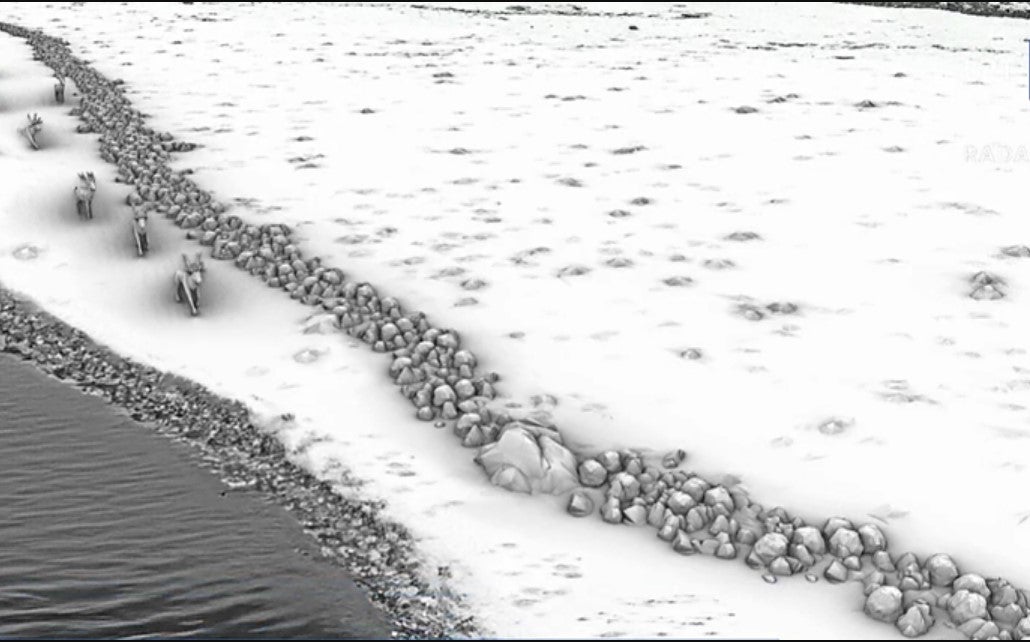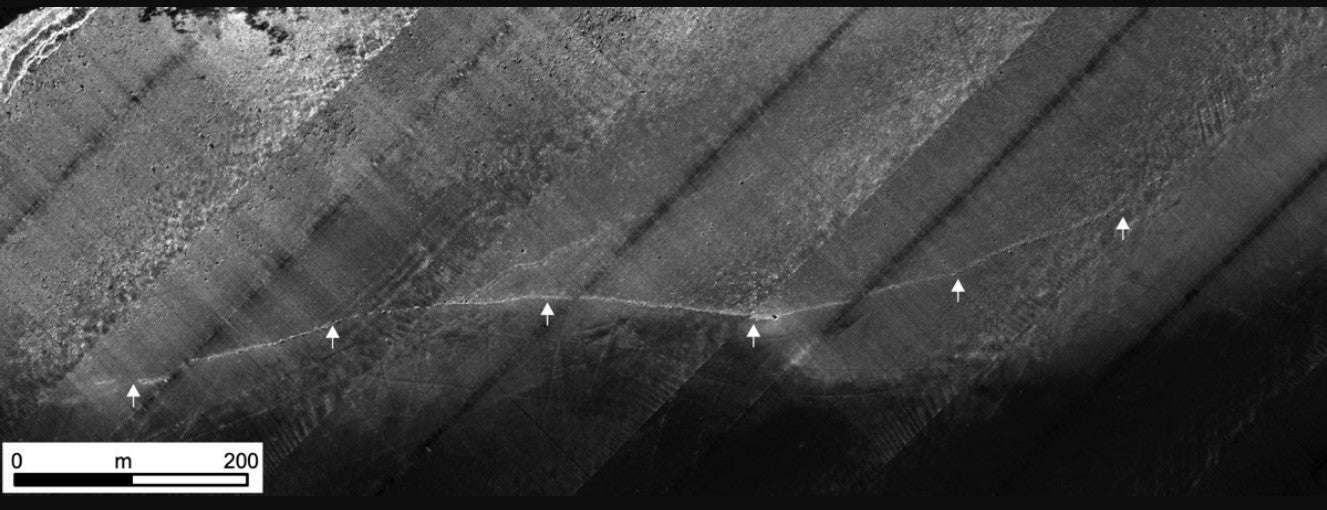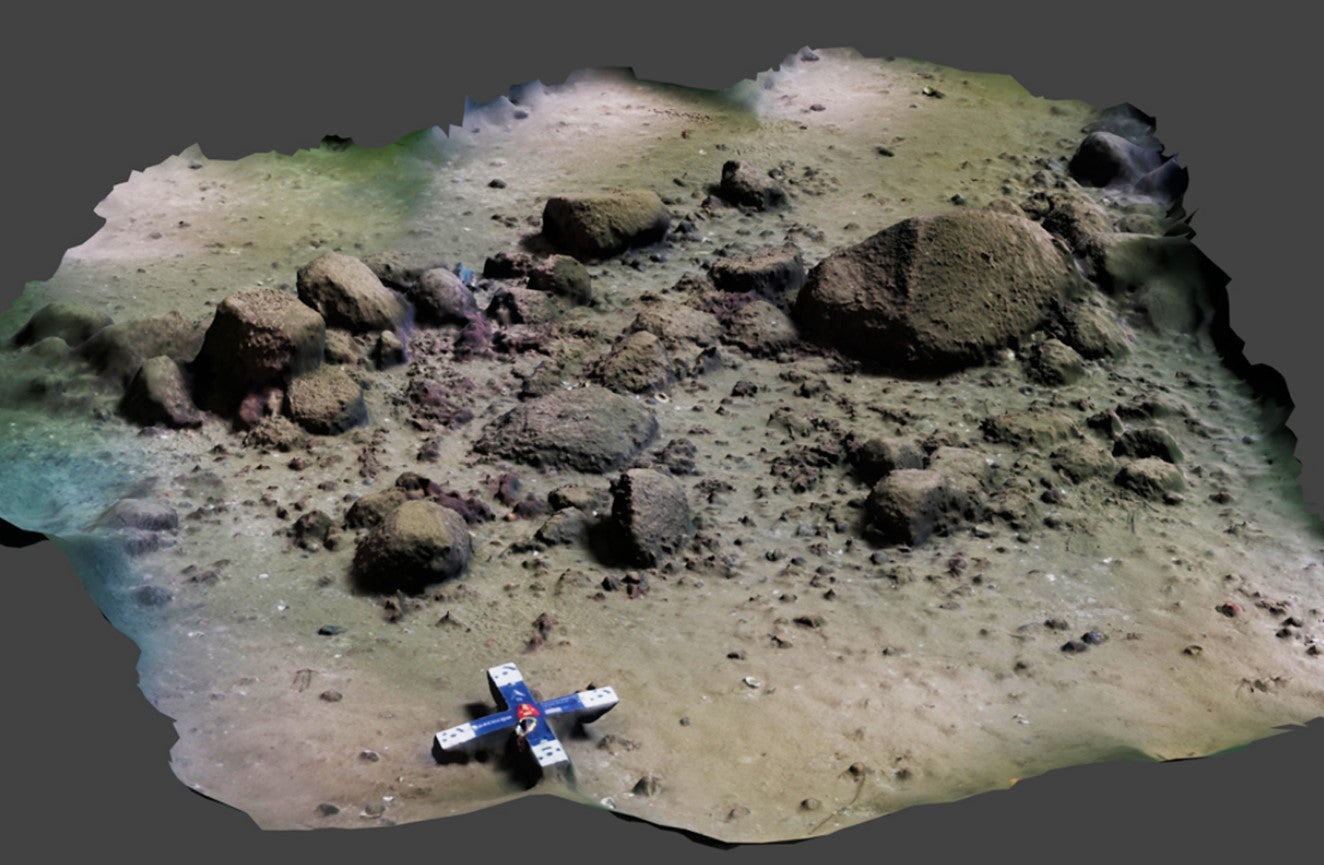Stone age wall found in Baltic Sea may be ‘Europe’s oldest megastructure’
The structure was probably used by hunters stalking reindeers, German researchers said

Your support helps us to tell the story
From reproductive rights to climate change to Big Tech, The Independent is on the ground when the story is developing. Whether it's investigating the financials of Elon Musk's pro-Trump PAC or producing our latest documentary, 'The A Word', which shines a light on the American women fighting for reproductive rights, we know how important it is to parse out the facts from the messaging.
At such a critical moment in US history, we need reporters on the ground. Your donation allows us to keep sending journalists to speak to both sides of the story.
The Independent is trusted by Americans across the entire political spectrum. And unlike many other quality news outlets, we choose not to lock Americans out of our reporting and analysis with paywalls. We believe quality journalism should be available to everyone, paid for by those who can afford it.
Your support makes all the difference.A mysterious 10,000-year-old wall discovered at the bottom of the Baltic Sea might be Europe’s “oldest megastructure”, researchers have said.
The structure, made of around 1,400 smaller stones and 300 larger boulders, was discovered stretching for almost a kilometer along the coast of Germany.
Experts at the Leibniz Institute for Baltic Sea Research said the wall probably lined a now-defunct lake and could have been used by hunters stalking reindeer herds.
“Running animals were forced to follow such structures without trying to jump over them,” Dr. Jacob Geersen told The Guardian.
“A ‘bottleneck’ was created between such a wall and, for example, the shore of a lake or another similar structure,” he added.

“All this places Blinkerwall among the oldest known examples of hunting architecture in the world and potentially makes it the oldest man-made megastructure in Europe,” the scientists said.
The structure was flooded with salty sea water around 1,500 years after it was built which helped preserve it around 21 meters below the surface.
Scientists estimate the total weight of the structure at 142 tons. The researchers intend to revisit the discovery site to reconstruct the ancient landscape and look for animal or human bones and hunting projectiles.
It comes after an ancient settlement was discovered hidden deep within the Amazon rainforest by new laser technology used by archaeologists.
The 2,500-year-old roadways were discovered in the dense South American rainforest by French researchers. Excavations showed the complex network of passageways was occupied from roughly 500 BC to sometime between AD 300 and 600.

The researchers also discovered groupings of nearly 15 distinct settlement sites that ranged in their size and number of structures.
Some of the settlements also had huge mounds that stretched up to 492 feet (150 meters) long and stood 26 feet (8 m) high.
Join our commenting forum
Join thought-provoking conversations, follow other Independent readers and see their replies
Comments